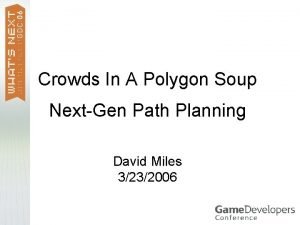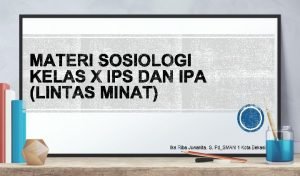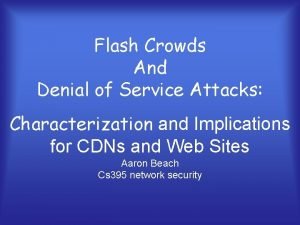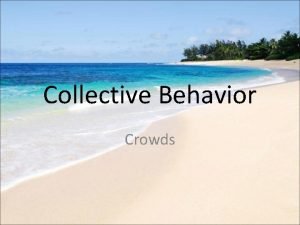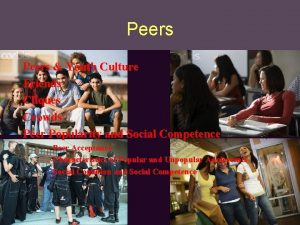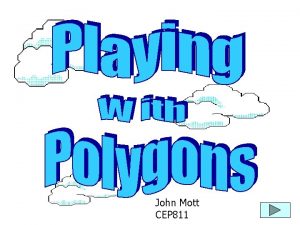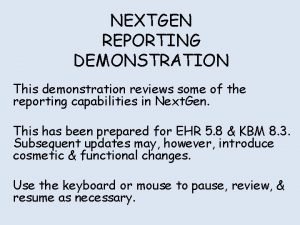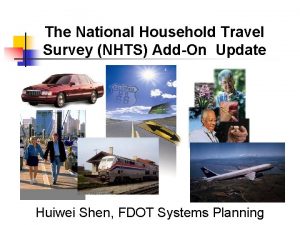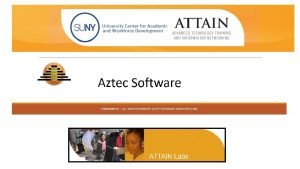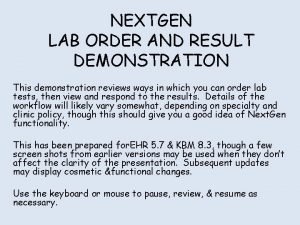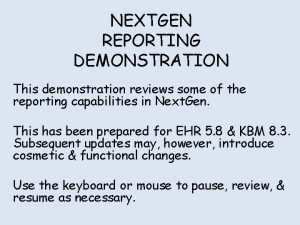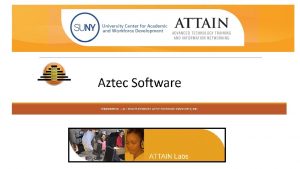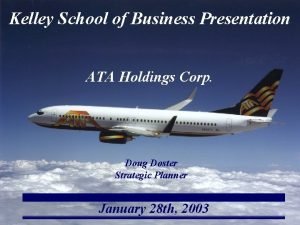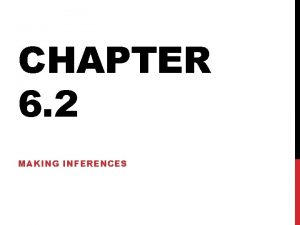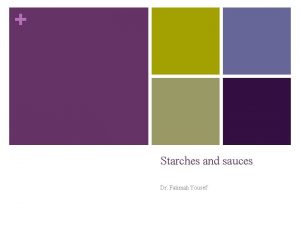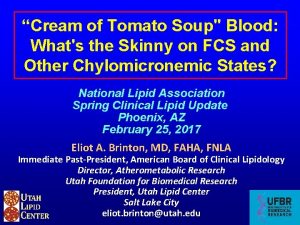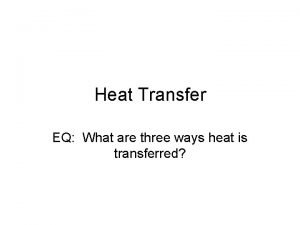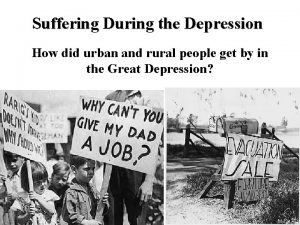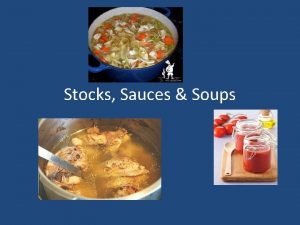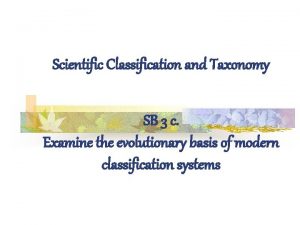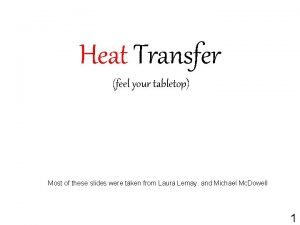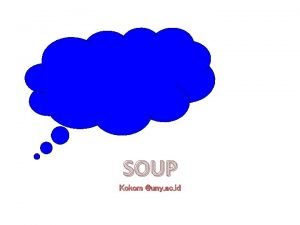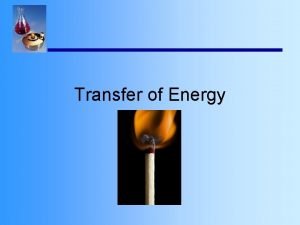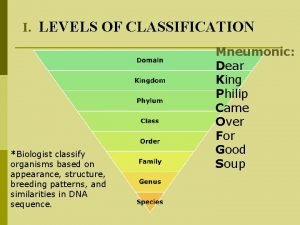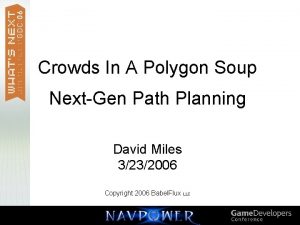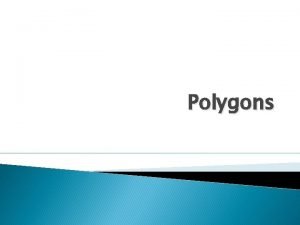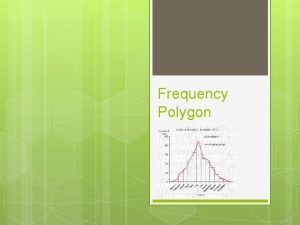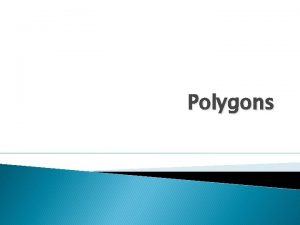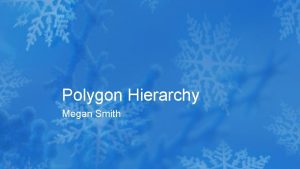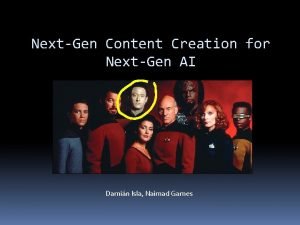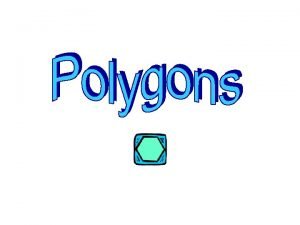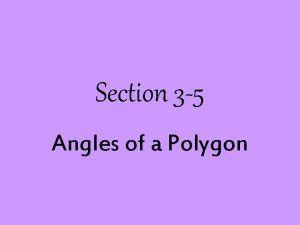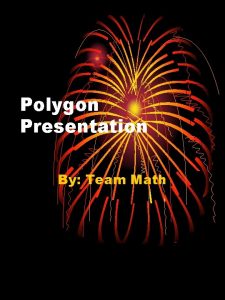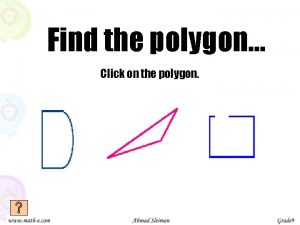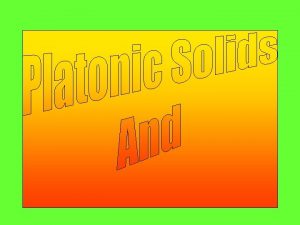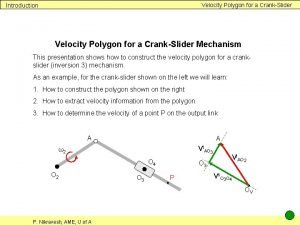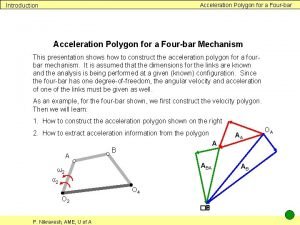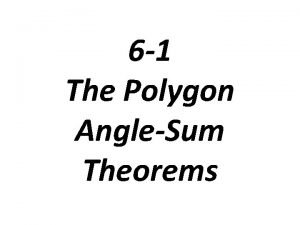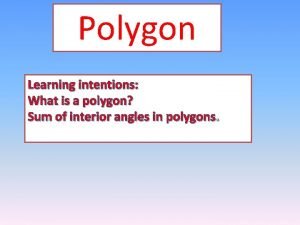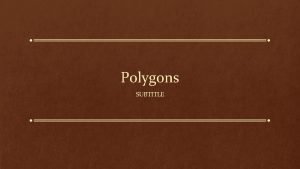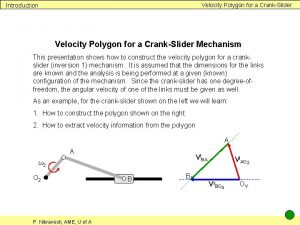Crowds In A Polygon Soup NextGen Path Planning








































- Slides: 40

Crowds In A Polygon Soup Next-Gen Path Planning David Miles 3/23/2006




Automated Build Process

Voxelize Polygon Soup

Identify Walkable Surfaces

Simplify Surface Perimeter

Partition Into Convex Areas

Convex Partitioning

Convex Area Graph Complete

Holes in the Surfaces

Splice Location

Single Polygon Surface

Convex Area Graph Complete

Overhead Obstacles

Walkable Surface Removal

Changing Worlds Dynamic Obstacles • Dynamic obstacles reconfigure world • Dynamic areas added • Pathfinding algorithm unchanged

Boolean Subtract - =

Boolean Subtract One Area

Non-Convex Dynamic Areas

Establish Connectivity

Match Up Remaining Edges

Dynamic Obstacle Summary • • • Find areas affected by dynamic obstacle Record any edges entering from outside Boolean subtract Partition any non-convex dynamic areas Match up unconnected edges

Fluid AI Navigation What can I do with my convex area graph? – Very fast navigational ray-casts – Distance to edge queries – Repulsion fields on edges – “Next corner” determination

Path Following in Flocking Desired flocking behavior Common approach attracts each flock member to the minimum distance path. Does not adapt to available freespace. Repulsion from edges can easily trap individuals in local minima.

For The Pathing Connoisseur Unneeded return to the original path annoys the pathing connoisseur Ahhh, much better

It’s Easy Each member of the flock steers left or right to head towards the “next corner”.

Finding the Next Corner

“Portals” Between Areas

Initializing the Loop

First Update, Left Side

First Update Complete

Second Update, Left Side

Second Update Complete

Third Update, Left Side

Final Output

“Next Corner” Summary • • • Easy to compute from convex graph < 2 cross-products per iteration Can limit iterations Never explicitly create min-dist path Fluid motion even with large disturbances

Conclusions • Automated build of convex area graph – efficiently represents the walkable free space – operates on polygon soup mesh – settable enemy size and shape • Dynamic obstacles update graph – no speed overhead once updated • Fluid AI navigation using the graph – Many useful queries performed rapidly

Special Thanks • Meilin Wong • Hong Park and David Modiano • Crystal Dynamics • dmiles@babelflux. com • www. babelflux. com
 Nextgenpath
Nextgenpath Cliques and crowds
Cliques and crowds Faktor pembentuk kelompok sosial
Faktor pembentuk kelompok sosial The wisdom of crowds
The wisdom of crowds Flash crowds
Flash crowds Conventional crowd
Conventional crowd Bustling crowds
Bustling crowds What is the difference between cliques and crowds
What is the difference between cliques and crowds Not polygon
Not polygon Unity signalr
Unity signalr Nextgen md
Nextgen md Nextgennhts.com
Nextgennhts.com Nextgen crystal report
Nextgen crystal report Nextgen office
Nextgen office Sap nextgen-trades
Sap nextgen-trades Www.nextgennhts.com survey
Www.nextgennhts.com survey Nextgen ngap 11
Nextgen ngap 11 Nextgen aztec software
Nextgen aztec software Nextgen orders
Nextgen orders Oasis iaqg
Oasis iaqg Nextgen reporting
Nextgen reporting Www nextgen aztec
Www nextgen aztec Nextgen dynamic forms
Nextgen dynamic forms Next generation emr
Next generation emr Ata holdings
Ata holdings Balloon-powered car conclusion
Balloon-powered car conclusion Why does kyle put the report card in a soup can
Why does kyle put the report card in a soup can What is starch
What is starch Hdl tomato soup
Hdl tomato soup A spoon in a cup of hot soup becomes warmer
A spoon in a cup of hot soup becomes warmer The new deal an alphabet soup of agencies
The new deal an alphabet soup of agencies Breadlines and soup kitchens definition
Breadlines and soup kitchens definition Thickening agents for sauce
Thickening agents for sauce Dear king phillip came over
Dear king phillip came over Shark fin soup
Shark fin soup Examples of convection
Examples of convection Suhu penyajian sup
Suhu penyajian sup Examples of energy transfer
Examples of energy transfer What are the classification of soup
What are the classification of soup Kingdom phylum class order
Kingdom phylum class order Ile de france cuisine
Ile de france cuisine
